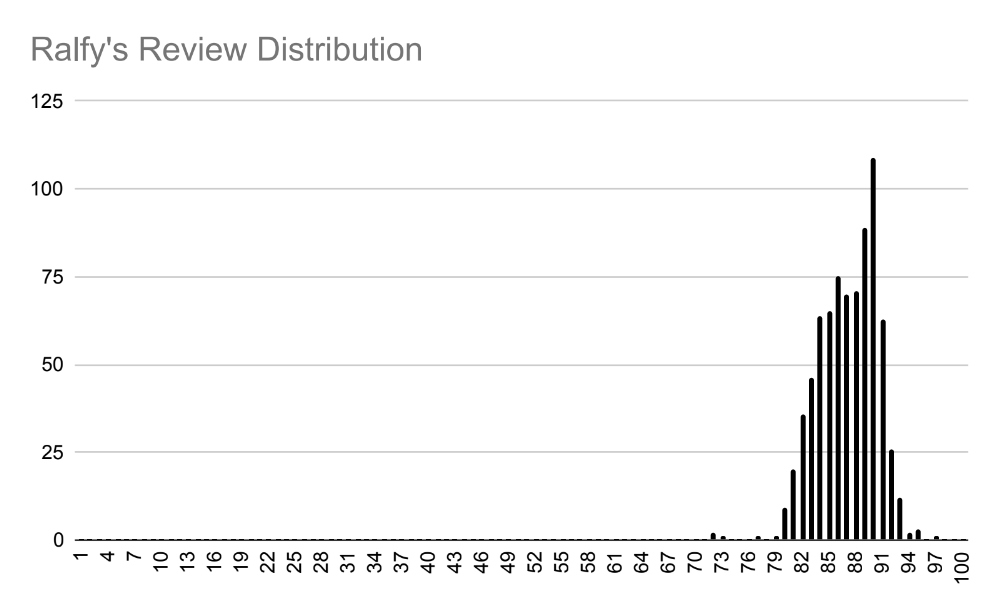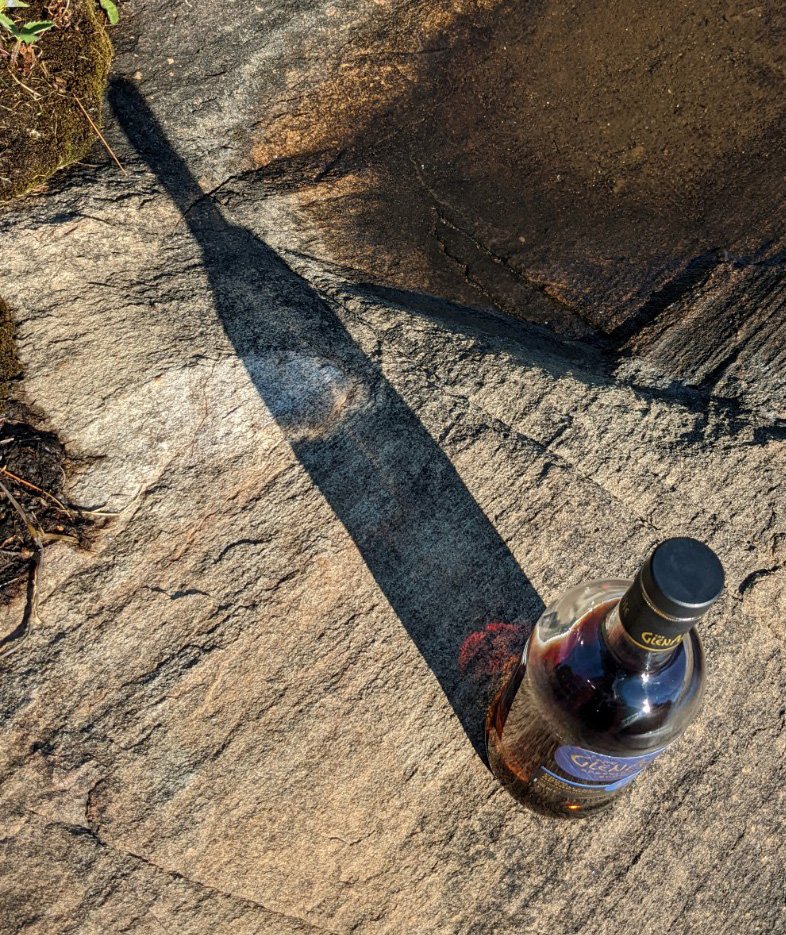GlenAllachie 15yo
Official Bottling | 46% ABV
Score: 5/10
Average. In a good way..
TL;DR
Well dressed for the party but the conversation is a bit dull
A Teenage Speysider With My Thoughts On Scoring
The GlenAllachie. A divisive distillery in the online whisky community because, at this point in time, the whisky available for purchase is essentially blend-stock, re-racked and revitalised with good casks and whisky-celeb flair. Some love the impact that quality maturation and finishing can have, and some can’t get past the downside of a new make spirit that perhaps lacks character.
Billy Walker has put this otherwise low-key distillery on the radar of whisky enthusiasts with an excellent cask program and the promise of a tweaked-for-higher-quality new make finding its way into bottles in the (perhaps not too distant) future. But instead of talking about spirit vs. cask (all the details of this distillery and high profile takeover have been discussed ad nauseam in recent years), I’m going to take this opportunity to put down a few thoughts regarding scoring. Mostly because I’m fascinated by how a system so seemingly innocuous can signal intent and have such a meaningful impact on how the review is perceived.
Dramface scale vs 100-point scale
As an engineer, I do tend to enjoy the technical details so bear with me while I start with some basic data analysis, building on the score stats shared in our six months of Dramface page.
The Dramface ten-point scale aims to centre the mean around the middle of the scoring band. Seems reasonable, no? As a contributor, I have access to the data and can report that so far the average score given is 6.2 with a standard deviation (a measure of how dispersed the data is) of 1.3. The most commonly assigned score is seven, followed closely by six. The distribution is shifted slightly, with most reviews scoring above “average” - which should be a five.
Next, we’ll look at Ralfy’s scores, one of the most prolific 100-point whisky reviewers out there.
Using the data compiled on the Ralfy fan page, we can calculate that Ralfy’s scores average 87.1 and the standard deviation is 3.3.
Interesting to note that Ralfy’s most assigned score is the coveted 90, with over 100 whiskies receiving this notable endorsement. Here we see the blight of the 100-point scale - so much real estate left vacant to the left of 80.
As Ralfy fans know, he doesn’t typically review whiskies that would score less than 80, which could skew the data a bit. I would argue that he still reviews poorer whiskies, which generally receive scores in the low 80s, and believe that overall distribution of his scores is largely equivalent to most of the other 100-point reviewers, who rarely use more range on the scale, and typically review average quality whiskies in the mid-80s and poor quality whiskies in the low-80s.
I would also argue that the whiskies Dramface reviewers pick for their articles tend to be of higher than average quality to start with, which is reflected in the data. Generally we review good whiskies. Nobody goes out of their way to purposely select a poor whisky or awards a 2/10 just to make a statement (except maybe that one time). If we were a Johnnie Walker and Crown Royal review blog, the chart would be shifted more to the middle of the scoring band, reflecting the average.
As a side note - if you are reading this and have access to other whisky scoring data that can be shared for consideration in a future update, please let me know.
After some approximations and simplifying assumptions, the equation that can be used to roughly convert from a Dramface score to a 100-point score, as implemented by Ralfy is:
100-point = 2.5 x DRAMFACE + 72
Here’s the conversion in a handy table in case you don’t feel like doing the maths.
I hope that helps better visualise the scores and provide some means for comparing between Dramface (or even other established ten-pointers that centre around five, like Malt) and the more commonly implemented 100-point scales used for reviews.
The next point that I think about quite often and want to explore in a more qualitative way is…
Why is scoring data usually skewed to the high range?
The majority of whisky reviewers out there tend to score most, if not all of their reviews in the top 20% of their chosen scoring band. With all whiskies receiving at least four out of five stars, 8+ out of 10, or 80+ points. Even Aqvavitae’s Recycled Reviews gives most an eight or higher.
I realise that with online reviews in general these days we are always expecting to see perfection. If my Uber driver or a restaurant I’m going to has less than 4.7 out of 5 stars, I’m not expecting a standout, or even generally pleasant experience. I also realise that reviews are entirely subjective, so what does a score really mean? Anyway…
“If I wanted your opinion, I’d give it to ya”
Back on track - from what I can make out, there are two different effects here. One is the already mentioned positive score shift due to enthusiast reviewers generally choosing better whiskies for review. This is why Ralfy’s most assigned score is 90 and why Dramface scores more 7s than 5s.
The other reason, according to my intuition, is that score inflation softens the blow a bit for a bad review, making the reviewer seem more agreeable, or generally likeable. This explains why almost all scores on the 100-point scale land in the 80s. A feature that Dramface intends to avoid.
Going back to our handy conversion table above, we can see 3/10 is roughly equivalent to an 80 on the 100-point scale. If a 3/10 is awarded it looks bad, definitely a product to stay away from at all costs, but an 80 is more palatable. Heck, a quality rubbing alcohol could score in the mid 60s the way most reviewers implement the 100-point scale.
Reviewers that give their marks in the upper 80th percentile of their scoring band may be catering towards the industry and its marketing. I doubt most reviewers do it on purpose, and some would definitely be offended at the suggestion. If a reviewer wishes to be seen favourably and more easily gain industry connections (and probably free bottles), it helps to align with 80th-percentile-is-the-norm. Marketers can’t use a 7/10 for promotion, even if it translates to a 90, and therefore scoring systems like Dramface’s that attempt to use 5/10 as average are of limited use to them.
What shall we score this lovely GlenAllachie?
Review
GlenAllachie 15yo, official bottling, NCF, natural colour, 46% ABV, Batch 28.08.21
£65 -£70 (CA$137) and regularly available
I remember watching an interview with Billy Walker a while back on some popular whisky YouTuber’s channel where he said he was fairly pleased with how the 15 year old turned out. I believe he may have been referring to a release roughly around this one, which was bottled in 2021. The colour is very dark and reddish, perhaps some sort of red wine cask in the mix (Ralfy thinks Port).
Nose
Raisins, syrup, dark cherries and plums, apple cider, lightly effervescent. With water a slight farmy note appears, with chocolate, vanilla, grape soda, mixed nuts, citrus, orange, and banana.
Palate
Dried dark fruits, savoury scone, jalapeño pepper. It’s hot for the ABV and mainly hits the sides of the tongue transitioning to a mid-length harsh finish. Water changes things dramatically and smooths out the harshness (although it’s still there), bringing more sweetness, fudge and milk chocolate, fruit juice, and slight herbal tones. The nose is more pleasant than the taste, which just seems a bit simple and hot.
The Dregs
The GlenAllachie is fine, a good casual sipper for when the weather is a little cooler. Depending on the mood of my palate I shift back and forth between finding it full of rich sweetness or falling flat. I don’t pretend to be an expert on the impact of different cask maturations but I do have some sense of what they can bring. I’m glad I’ve tasted several GlenAllachies from a period before the new distillate appears but I won’t buy this one again (for a while, at least). For me that’s the difference between a 5 and a 6. But the bigger issue here is the scoring and the realisation that a 5 is good whisky and nothing to be ashamed of.
This is the enthusiast’s scoring system. That’s what interested me in review sites like Malt and Dramface in the first place. A scoring system that is designed to be of no use to the industry makes an affirmation of our independence and who our target audience is. As long as we don’t abuse the system too often, when we discover something special, it can be expressed with a numerical value that has meaning for us and for our readership.
Score: 5/10 AMc
Wally’s Notes
I should state the bottle in my hand is dated 05.11.19. I bought it and opened it in 2020 and have always had an okay time with it, but the fact that there’s still a nice chunk left after two years suggests otherwise. I seem to be reaching past this. Let’s refresh things and see if I can remember why.
Score: 5/10
Average. In a good way.
TL;DR
Reaching past it
Nose
Sangria, sweet oranges and blackberries, mint leaves and maybe some wintergreen. Wood shavings or chewed pencil, milk chocolate. A drop or two of water and time lifted the brightness a bit; cherries and all-spice. Some flat cola. Blackberry jam.
Palate
The sweet and slightly spiced arrival is a little linear, but it is nice and mellow. I can liken this to a syrupy, brown sugar profile, almost rum-like at times. There is a little bitterness alongside. Something like cold coffee or sweet stout. The addition of a little water brought some nice fruit; prunes in juice, damsons and blackberries. The sweetness fades to leave that stout note on the finish.
The Dregs
I think I’ve always felt as I do now, that this is a great whisky to pour for someone who likes the style - a sweet sherry cask experience. But for me, it needs to have a little more. If I look over the notes, I feel that I can pretty much tie most of them fully to the casks involved. There’s PX here, I’m sure, but the experience also suggests maybe a little port or wine bringing that bitter edge that’s backed up by a pinkish tint in the glass. Overall, this is a little boring while not being bad or offensive in any way. I think that’s why it’s been allowed to sit a little long. Feeling sorry for it, I pour another but not much changes the feeling that I’m looking forward to when Glenallachie relies less on busy casks. I’d like a touch more spirit in here to wake things up a bit.
Score: 5/10 WMc
Tried this? Share your thoughts in the comments below.
-
Dramface is free.
Its fierce independence and community-focused content is funded by that same community. We don’t do ads, sponsorships or paid-for content. If you like what we do you can support us by becoming a Dramface member for the price of a magazine.
However, if you’ve found a particular article valuable, you also have the option to make a direct donation to the writer, here: buy me a dram - you’d make their day. Thank you.
For more on Dramface and our funding read our about page here.
Other opinions on this:
Got a link to a reliable review? Tell us.




































